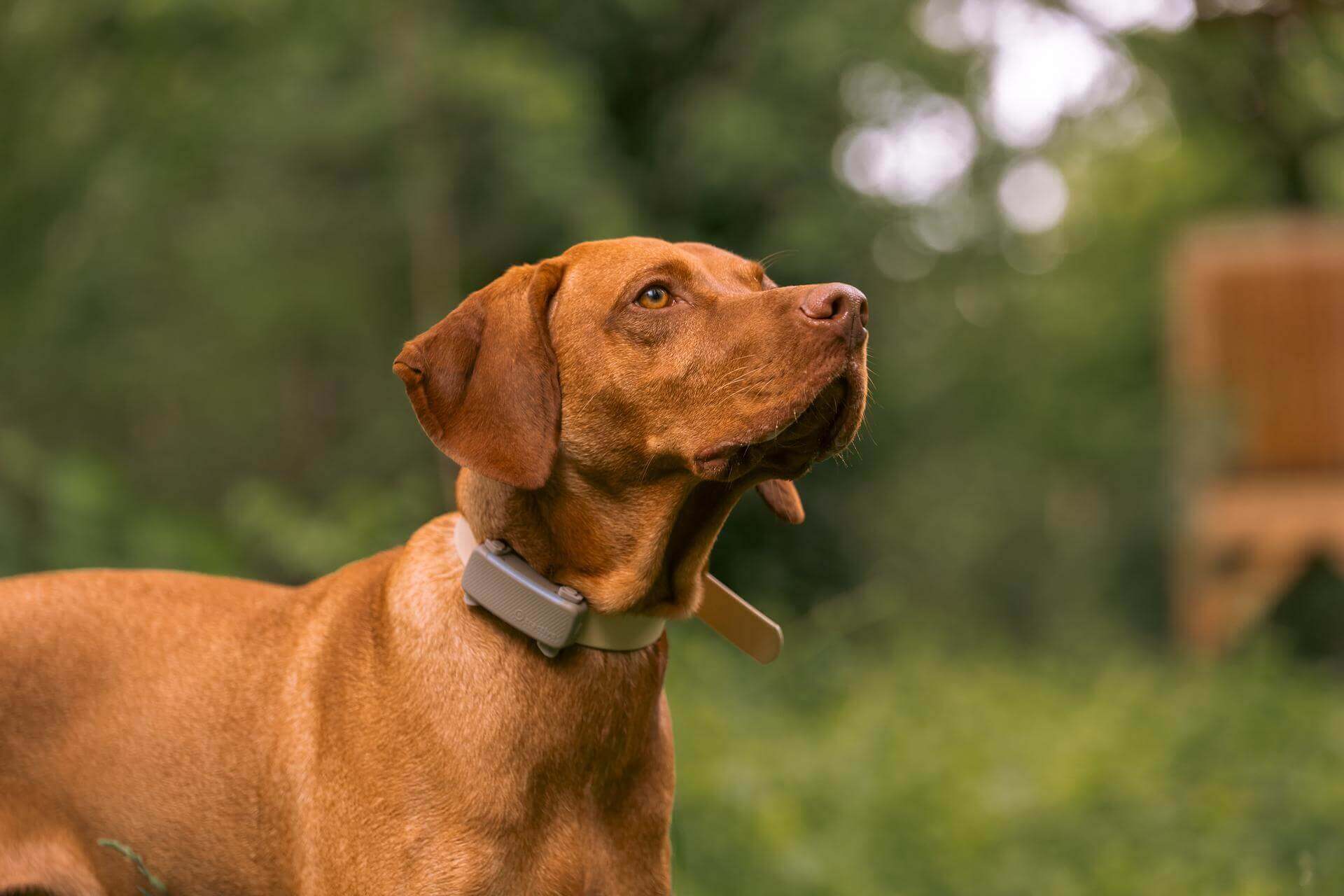Why A QR Code Dog Tag Alone Can’t “Find” Your Dog
Are QR code dog tags a necessity or more a "nice to have" when it comes to a missing dog? Let's find out.
You might’ve wondered whether a QR code dog tag can be an extra layer of protection to help someone identify your buddy if they get lost. But is just this fancier ID tag a 100% surefire solution to finding your lost dog? In a nutshell: no, just a QR code might not be enough to keep your buddy safe. (A smart dog tracker might just be the saner choice instead.) Here’s why.
Key Takeaways
QR code tags can store more information than traditional ID tags and are easy to update. They’re a great “nice to have” addition, especially compared to regular ID tags.
Their downsides include the fact that QR code tags do not protect against pet theft and may not satisfy legal requirements for pet identification.
For maximum safety, go for a regular ID tag and a GPS tracker. This way, you can take an active role in finding your dog yourself. You also avoid the legal trouble that might come from your dog not having any identifying details.

Always know your buddy is healthy & safe
Read more- Key Takeaways
- Where a regular ID tag can fail in a “missing dog” situation
- What’s a QR code dog tag?
- How do dog tags with QR codes work?
- Do QR code dog tags actually use GPS?
- The perks of a QR code dog tag
- Why just a QR code dog tag isn’t a 100% safety guarantee
- Why a QR code dog tag should never fully replace a regular one
- The solution: An identifier + GPS tracker for max safety
- Ready to add an extra layer of security to your buddy’s collar?
Where a regular ID tag can fail in a “missing dog” situation
In most US states and countries, a dog ID tag with your name and contact info is actually a legal requirement. It’s an important emergency measure in case they get lost. (And to be fair, it IS the first thing someone might check upon running into a stray dog.) But that’s assuming it hasn’t fallen off, gotten lost, smudged to the point of illegibility, or your dog’s been stolen.
A regular ID tag also limits how much of your contact info you can squeeze into the little space you might have. Plus, in case you change your phone number or address, you’ll have to get your dog a brand new ID tag – every time. Which is where some dog parents might consider equipping your buddy with both a regular ID tag – but also one with a QR code.
What’s a QR code dog tag?
A QR code dog tag is a small, scannable tag you can attach to your dog’s collar. They don’t need any batteries or charging, meaning they’ll last you for as long as the QR code remains scannable. The whole point is that by scanning this QR code, a stranger can help contact you if they come across your lost dog.
How do dog tags with QR codes work?
A QR code dog tag works by linking to an online profile for your pet. When someone finds your lost dog and scans the QR code tag with their smartphone, they’re taken to a webpage that you’ve created. This page can contain various information, such as your contact details, the dog’s name and photo, medical information, and any special needs.
In a nutshell, when someone finds your lost dog, they need to:
- Scan the QR code on their tag using their smartphone
- Head to the website your QR code leads to – where you’ve shared your contact info
- Get in touch with you to let you know they’ve found your do
Do QR code dog tags actually use GPS?
No, QR code dog tags don’t have built-in GPS technology. They don’t contain any electronic components, batteries, or hardware needed to track a dog’s real-time location. Instead, they function as a digital ID. Some pet tags, like the ByteTag, even let rescuers share their GPS location with you once they’ve found your dog. But no, they don’t include any GPS functionality by themselves.
Many QR tag systems provide a location alert. When the finder scans the QR code, you can receive an instant notification that includes the GPS location of the finder’s phone at the time of the scan. This is how the system helps you pinpoint your dog’s general whereabouts. It relies on the good samaritan who found your pet and their phone’s location services, not on the tag itself.
QR Tags vs. GPS Trackers
| QR code dog tags | GPS dog trackers |
| Function A digital ID that links to your pet’s online profile. | Function A real-time location tracker for your pet. |
| Technology Passive; relies on a finder to scan the tag with their phone. | Technology Active; uses GPS satellites and cellular networks. |
| Cost Affordable, often a one-time purchase. | Cost More expensive, typically requires a monthly or annual subscription. |
| Power No batteries or charging required. | Power Requires regular charging (e.g., daily to weekly). |
| Use case Best for adding a layer of detailed, scannable information to your dog’s collar. | Use case Essential for dogs who are prone to escaping, wander off frequently, or are very active. |
| Location method Provides the location of the person who scanned the tag. | Location method Provides your dog’s live, real-time location. |
The perks of a QR code dog tag
Now we do want to clarify right off the bat: a QR code dog tag should never fully replace a regular ID tag. (We’ll cover why a little further below.) But they do come with a ton of perks – including the ability to:
- Store and update all your info in one place
Like, for example, on an online profile. Here, you can include your name, contact details, how a rescuer can identify you, and other important info. All of which you can update on the go. No need to buy a new ID tag or get your new details engraved every time. - Include important info about your dog
Like, for example, any health issues they have that require immediate vet attention. Or emergency contacts in case your phone isn’t working. Or even your dog’s microchip details. - Prove you’re actually your dog’s owner
With a registered QR code and online ID linked to it, you can assure a rescuer that you actually are the rightful owner of your dog. Besides, if your ID tag indicates that your dog is microchipped, your contact details will immediately turn up via the national microchip database you’ve registered them with.
⚠️ Just remember: with great convenience comes great risk. Aka, the risk that someone might misuse your private details.
“Over 30% of QR code scans are executed with harmful intentions, highlighting a significant security concern for pet owners.
These scans can lead to unauthorized access to personal data, underscoring the need for stringent security measures in QR code usage.”
– My QR Code1
Why just a QR code dog tag isn’t a 100% safety guarantee
Just an ID tag alone isn’t a 100% guarantee you’ll be reunited with your dog. Why? Because, for starters:
- You’re relying entirely on strangers to keep your dog safe
Who will need to have a smartphone that scan QR codes and then actually get in touch with you to inform you they’ve lost your dog. In a lost dog situation, every second counts. - You might not run into smartphone-carrying strangers everyhere
Like, for example, if you’re out hiking, running, or camping out in the wilderness – or in a rural or less tech-savvy area. - A pet thief isn’t likely to return your dog to you
Maybe it’s because your dog is a rare breed, an expensive breed, a purebreed – or they just aren’t spayed or neutered yet. But for whatever reason, using only a QR code dog tag is leaving your dog’s safety in the hands of strangers. Strangers who might not have the best intentions. - A rescuer might be suspicious of scanning a QR code
QR codes have unfortunately picked up a bit of a bad rep – mostly due to cybersecurity concerns. Some studies have revealed that about a quarter of QR codes direct users to phishing websites or initiate malware downloads. Which, over time, could potentially lead to identity theft or financial fraud.
Why a QR code dog tag should never fully replace a regular one
From a legal standpoint, you could actually run into a world of trouble if you skip using a regular engravable ID tag with your name and contact info. Which is why it’s wiser to include a QR code dog tag as an add-on to an old school one. The QR tag itself doesn’t 100% meet the legal requirements of a pet “identifier.” So if your dog ends up rescued – but it turns out they weren’t wearing a proper ID tag, you could face a hefty fine at best or even jail time, in more extreme cases.
“While these tags are very useful and can store a lot of information…they shouldn’t replace the traditional engraved tags.
To comply with the law, QR code tags should be used as an additional feature, as it’s vital that your dog’s tag still displays your name and address alongside this.”
– Marc Porcar, CEO of QR Code Generator PRO S.L21
The solution: An identifier + GPS tracker for max safety
When it comes to your dog’s safety, a QR code tag and a GPS tracker aren’t mutually exclusive. In fact, they work best together. For 100% peace of mind, we recommend an ID tag on the collar for immediate identification – and the Tractive smart dog tracker for active, real-time location.

Unlike a passive QR code tag, a true GPS tracker like Tractive gives you an active role in your dog’s safety. With one, you can now:
- Track your dog in real-time
Your Tractive tracker provides location updates every 2-3 seconds in LIVE mode. Now you can follow your dog’s movements with precision and actively search for them. - Get others to help you find your dog
With the Tractive app’s Family Sharing feature, you can share your dog’s LIVE location with loved ones, friends, or even a neighbor. No need to rely on a single person or hope a stranger makes the right call. Everyone you invite can see your dog’s location on their own Tractive account, helping you bring your dog home faster. - Avoid relying on strangers
A QR code tag is a great tool for a helpful stranger. A smart dog tracker lets you take control. You don’t have to depend on someone finding your dog, having a smartphone, or even knowing what to do with a QR code. Instead, you can immediately spring into action, knowing exactly where to go.
Ready to add an extra layer of security to your buddy’s collar?
A QR code dog tag can play an important role in identifying your buddy in case they go missing. In many cases, these tags can be an upgrade from a regular ID. They can include vital info that can keep your dog safe until you pick them up. But besides privacy and security concerns around the use of QR codes, you might also risk legal trouble if you skip equipping your dog with a collar, ID tag, and your contact details where they’re easily visible.
💡Which is why, for max safety, you’re best off combining an ID tag with a GPS tracker that helps you follow their every step, as they make their every step.

Follow your dog anywhere
Get real-time location information, wherever they go. And find out when they try to make an escape, or just when they go somewhere they shouldn’t, with Virtual Fences.
And if you’ve liked this post, share it with a friend or a loved one – and let’s help build a safer, kinder world for our furry friends together.



